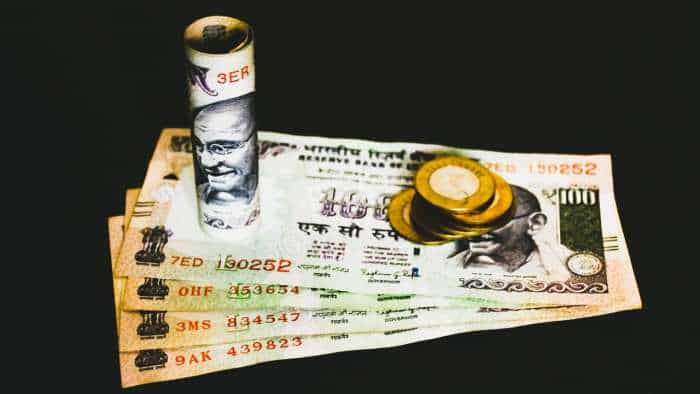Monsoon Season Update: Weather office IMD predicts above-average rainfall in 2024
IMD Monsoon Forecast 2024: Weather office IMD has predicted above-normal monsoon season rainfall this year.
)
IMD Monsoon Forecast 2024: The India Meteorological Department (IMD) on Monday predicted above-average rainfall in the monsoon season in 2024. The country's weather office expects to record 106 per cent (+/- 5.0 per cent) rainfall in comparison to the long-period average (LPA), it said in a press conference.
The LPA rainfall currently stands at 86 mm.
The IMD also highlighted moderate El Nino conditions at the moment which it expects to normalise going forward.
Typically, monsoon rains lash Kerala around June, cover the entire country around mid-July, and retreat in September.
Monsoon rains replenish reservoirs, ensuring water availability for crops and sustaining agricultural productivity. A good monsoon season leads to bountiful harvests, boosting the economy through increased agricultural output. The rains play a crucial role in ensuring food security for the country. A successful monsoon season translates to higher crop yields, which in turn stabilises food prices and reduces the risk of food shortages.
This stability is essential for maintaining a balanced economy and preventing inflation. Monsoon rains impact the rural economy by influencing agricultural incomes, employment opportunities, and overall economic growth in rural areas.
A successful monsoon season leads to higher rural spending power, driving demand for goods and services and stimulating economic activity in these regions.
Last week, private weather forecaster Skymet also predicted a normal monsoon season in the country this year, with expected rainfall at 102 per cent of the long-period average during the June-September period. The El Nino weather conditions are likely changing into a La Nina-like situation, according to Skymet.
What is El Nino? Is it different from La Nina?
La Nina conditions are favourable for normal rainfall in India, crucial for its agricultural-oriented economy. La Nina and El Nino are two contrasting weather phenomena that impact global climate patterns.
Monsoon rains are a vital component of the Indian economy, impacting various sectors and livelihoods across the country. The country's agricultural sector heavily relies on monsoon rains for irrigation and cultivation.
La Nina brings cooler sea surface temperatures, leading to increased rainfall in some regions and drought in others. On the flipside, El Nino occurs when sea surface temperatures are warmer than average, causing disruptions in weather patterns worldwide. The key distinction lies in the temperature of the Pacific Ocean and the resulting atmospheric effects.
While La Nina brings wetter conditions, El Nino leads to drier weather. Both phenomena play a significant role in shaping weather events not just in India but around the globe.
Get Latest Business News, Stock Market Updates and Videos; Check your tax outgo through Income Tax Calculator and save money through our Personal Finance coverage. Check Business Breaking News Live on Zee Business Twitter and Facebook. Subscribe on YouTube.
RECOMMENDED STORIES

Highest Senior Citizen FD Rates: Here's what banks like SBI, PNB, BoB, Canara Bank, HDFC Bank and ICICI Bank are providing on 1-year, 3-year, 5-year fixed deposits

PPF vs SIP: With Rs 12,000 monthly investment for 30 years; which can create highest retirement corpus

Small SIP, Big Impact: Rs 11,111 monthly investment for 15 years, Rs 22,222 for 10 years or Rs 33,333 for 7 years, which do you think works best?

Top 7 Large and Mid Cap Mutual Funds With Highest SIP Returns in 1 Year: Rs 27,27,2 monthly SIP investment in No. 1 fund has zoomed to Rs 4,05,296

Power of Compounding: At 12% expected annualised return, how soon can Rs 8,000, Rs 9,000, Rs 10,000 monthly SIPs build Rs 5 crore corpus?
03:15 PM IST










 Cyclone Fengal: Three villages of Tamil Nadu remain cut off
Cyclone Fengal: Three villages of Tamil Nadu remain cut off Bengaluru, parts of Karnataka to receive rainfall for next two days
Bengaluru, parts of Karnataka to receive rainfall for next two days Delhi AQI Update: Slight improvement but still in 'poor' category
Delhi AQI Update: Slight improvement but still in 'poor' category  Cyclone Fengal Latest Updates: Schools to remain closed amid IMD's red alert for heavy rain
Cyclone Fengal Latest Updates: Schools to remain closed amid IMD's red alert for heavy rain Air Pollution in Delhi: Air quality deteriorates, thick layer of haze continues
Air Pollution in Delhi: Air quality deteriorates, thick layer of haze continues